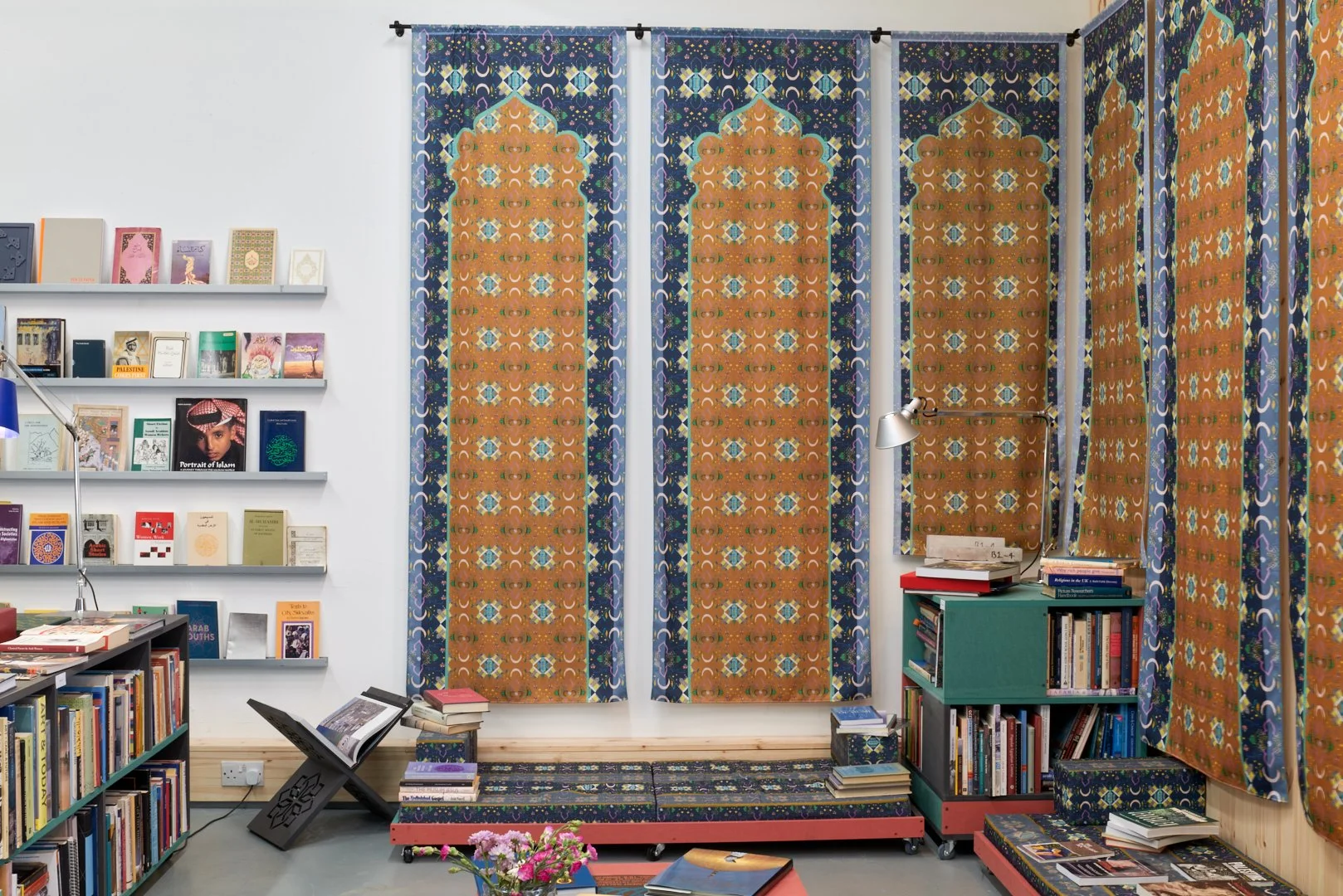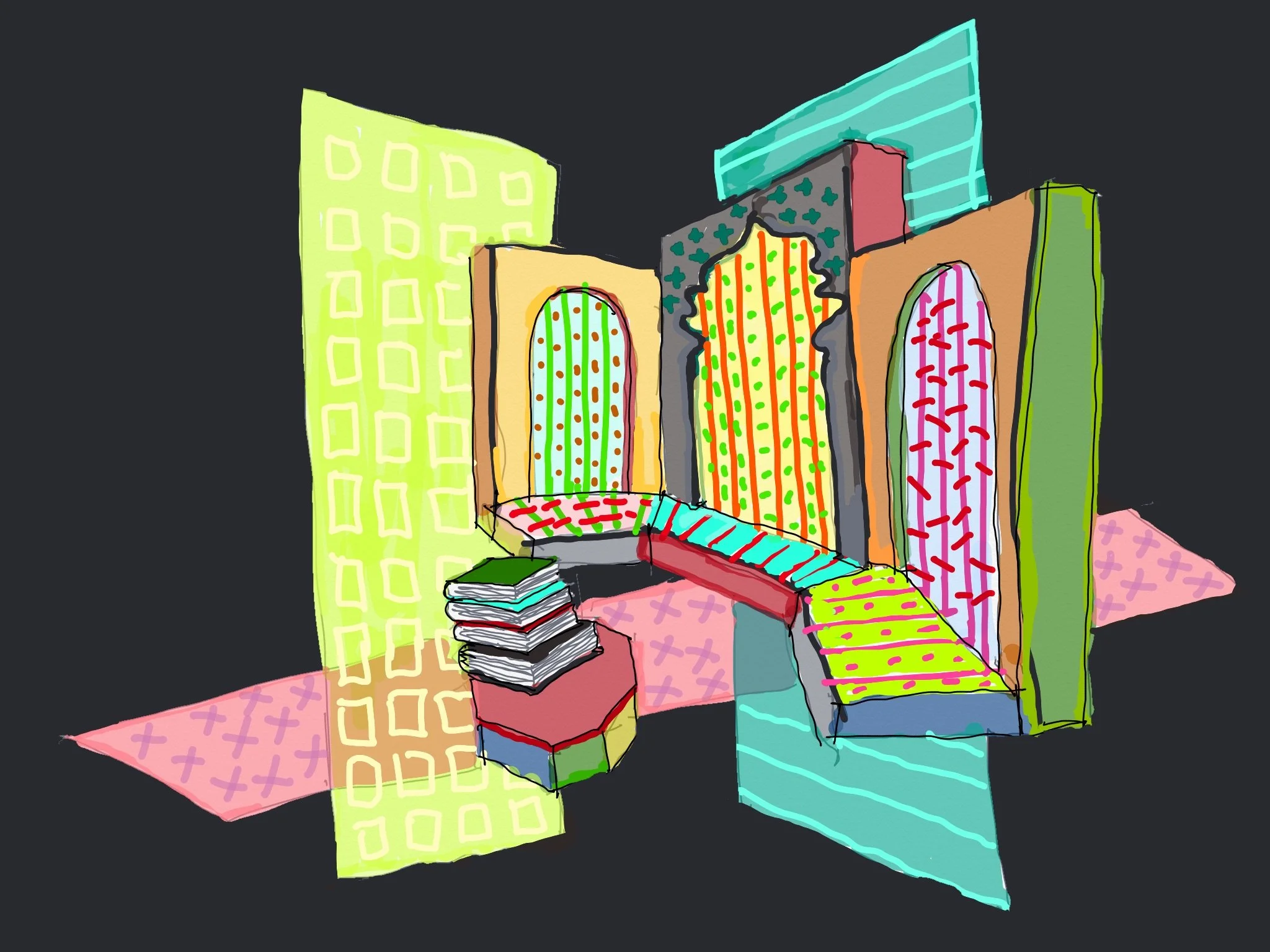The Reading Room
Folkestone
2025
Intersections – the Reading Room as ‘pocket utopia’
Hammad Naser
This room is an assemblage of books, archives and furniture. But it also houses memories, dreams, desires, suspicions, projections, reflections and myriad possibilities. The collaborative work of many, it is an invitation for people to gather – to read of course, but also to seek both refuge, and company.
As a physical space it is shaped by a series of commissioned artworks. Shahed Saleem has designed its modular furniture whose design is informed by Saleem’s research on the architectural and social history of mosques in Britain. The furniture is upholstered in fabric, and adorned with wall hangings, designed by Farwa Moledina in collaboration with women from Muslim and refugee communities of Folkestone and Dover. Moledina has digitally drawn patterns developed in embroidery workshops to shape the serial rhythms and geometric abstractions associated with Muslim cultures across multiple geographies.
A triptych of giant mirrors designed by Simon Davenport is a nod to the industrial heritage of the host site, and a support system for displaying a series of commissioned photographs by Mahtab Hussain. Hussain’s portraits honour the families associated with the founding of Folkestone’s mosque, the Islamic Cultural Centre, in a building that was previously Folkestone’s largest mill. Hussain also shows Folkestone’s Muslim community at Eid prayer – shoulder to shoulder on incongruously arranged prayer mats – in a sports hall large enough to accommodate them. The mirrors expand the space of the room, but also ensure that all viewers come face to face with their own reflections alongside the subjects of the photographs.
The Reading Room may have been built over a few months, but it is rooted in a decade-long engagement with the Muslim communities of Folkestone catalysed by the artist HoyCheong Wong. His contribution to the fourth edition of the Triennial, Minaret (2017), was a temporary facade for Folkestone's Islamic Cultural Centre in the form of minarets and arches fashioned from scaffolding and green netting by a team led by Davenport. Lit up at night, the installation brought Folkestone’s largely unnoticed Muslim communities into visibility.
For the fifth edition of the Triennial, Saleem worked with Wong, Davenport, and children from the community around Folkestone’s mosque to develop the installation, Nur (2021); a spectacular lantern which also housed a display of Saleem’s architectural plans for the mosque’s expansion and renovation, developed in consultation with the community. Planning and funding challenges may have thwarted the physical expansion so far, but the collective ambition it unleashed for a communal space remains undiminished. This Reading Room, presented alongside the sixth Folkestone Triennial, is one outcome of this ambition. Located in the heart of the city, a short walk away from both Folkestone’s main public library (shuttered since 2022) and the mosque, its shop front invites you in to encounter the books and people within.
Many of the people you might encounter are Muslims and/or refugees; communities that have been demonised and dehumanised as a means of fuelling a politics of division. In the simmering mistrust and suspicion of Muslims since the attacks of 9/11 and 7/7, and exacerbated by the anti-immigration riots of 2024, this invitation is brave and generous. It reminds us of art and artists’ capacities to shape ‘pocket utopias’– propositions for all of us to consider, adapt and possibly adopt – that refill our reservoirs of hope.
Hammad Nasar
Photos by Matt Rowe












